Issue 27 : 7 April 2019
Talofa Lava, Kia Orana, Malo E Leilei, Tena Koutou, Hello ...
... and welcome to the latest issue of “For The Love Of The Game”, the official e-zine of the New Zealand Amateur Sport Association Inc. We hope you enjoy reading the articles below.
If you have any feedback on this issue, ideas for future articles, or would like to contact the Editor, please click here. And, you are invited to forward the e-zine to others you know, who may be interested in reading it.
If you are interested in applying for membership of the Association, please click here.
Annual General Meeting : Notice Of Meeting ...
Notice is hereby given that the second Annual General Meeting of the New Zealand Amateur Sport Association Inc. will be held at the Scott Room, Wellesley Boutique Hotel, Maginnity Street, Wellington on Tuesday, 16 April 2019 at 5.30pm.

The Agenda for the Annual General Meeting can be downloaded, by clicking here.
Clubs Fail To Field Teams, For First Time In 120 Years ...
For the first time, just one club from Levin has entered a team in the premier Horowhenua-Kāpiti club rugby competition, with both Athletic (founded in 1931) and Levin Wanderers (founded in 1898), unable to field a senior side for the first time in the Club’s respective histories.
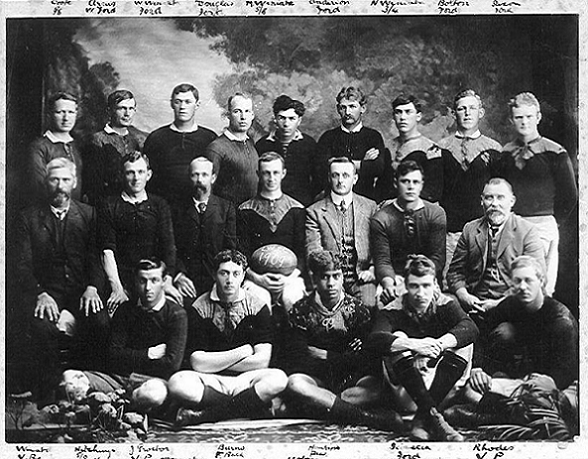
(The Levin Wanderers RFC team, in happier times for the club, 100 years ago in 1909)
Last year, Irene Eruera-Taiapa, of Levin Wanderers Rugby Club (pictured below), won the Charles Monro volunteer-of-the-year award at the New Zealand Rugby awards in Auckland. She is a Wanderers stalwart, has volunteered for the Horowhenua Kāpiti union and is involved with the Horowhenua Kāpiti Māori rugby board.
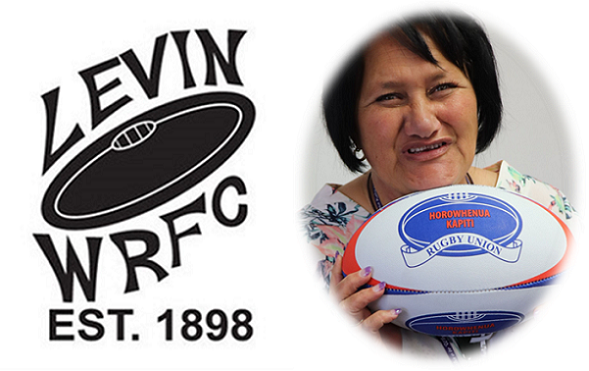
Irene says that the Wanderers Club faces many challenges in attracting and retaining players, with a number of players working night-shift jobs and unable to attend team trainings. She says “visibility gives credibility” and notes that player promises to support the Club are sometimes unable to be fulfilled, particularly given there are three clubs in Levin all competing for players.
While having no senior team this year, Levin Wanderers still manages to field 4 to 5 junior teams and this weekend, Athletic and Wanderers joined forces to create a Senior Reserve side. Irene notes that there is a lot of mana in the club and as she sees it, “the old guys will not let the Club fold”. Next week the Club will meet to discuss and confirm its future plans.
You can read more about this story, by clicking here.
“Controlled Sports Bill” To Be Introduced …
The Australian Government has introduced new legislation designed to "support health and safety and integrity objectives across combat sports". Replacing the Boxing Control Act of 1993, the legislation aims to expand safety and medical requirements, including annual medical screenings for contestants, pre-event medical screenings to ensure contestants are fit to compete, compulsory medical equipment at events and robust medical reporting requirements.
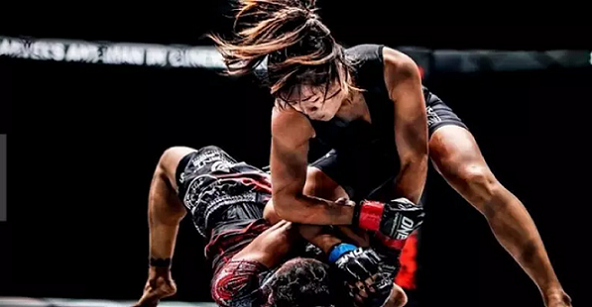
While intended to improve the safety of participants in sports such as Mixed Martial Arts and Muay Thai, there are fears that amateur contact sports such as sports like Judo, Kung Fu and Taekwondo (not previously included) will suffer under the burden of extra regulations. As a result, the Opposition will be tabling amendments to the draft legislation excluding training centres and other groups that hold events just for grading and training purposes.
Club Facilities Amalgamation Resisted ...
Increasing land values in Greytown (in the Wairarapa), has placed financial pressure on the local Rugby Club and Bowling Club to abandon their historic grounds, which are leased from the community-owned Greytown Trust Lands Trust, in favour of a new Sports Hub.

Neither Club is inclined to participate in the proposal, but may be saddled with increased rent by the Trust if they fail to embrace it. The proposal sees badminton, baseball, basketball, football, futsal, hockey, netball and rugby based at a new sporting hub, at Kuranui College.
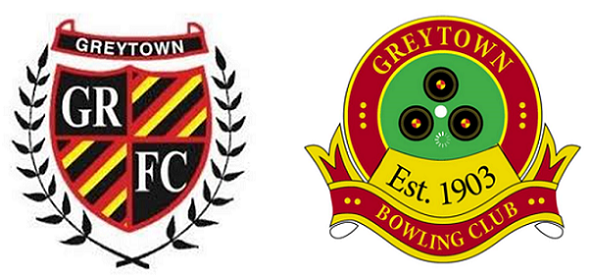
You can read more about the proposal, by clicking here.
Viewpoint : The Basis Of ROI ...
The expression "return-on-investment" (or ROI) is widely used in the commercial world to point to a desired strategic financial outcome. It centres on the use of capital to grow the value of an enterprise in monetary terms. Does the phrase have any relevance in the world of sport?

The answer is “yes”, when applied to sporting companies (or franchises), where there is private capital employed and an expectation of a financial return from those that have invested. The reality is that many sporting franchises (with some exceptions) struggle to make ends meet.
In the world of community sport, a better phrase to demonstrate a positive outcome is "recognition-opportunities-incentives", an alternative definition of ROI. In this case, the capital employed is less likely to be monetary, rather it is heavily reliant on the labour of volunteers and the goodwill of donors.

The confusion between the goals of professional sport and community sport is becoming increasingly acute. On the one hand, professional sport will say that community sport relies on its success in accumulating and distributing funds in a “trickle-down” manner. On the other hand, community sport will say that the “trickle” is (in reality) only the trace-amount left-over after required resources have been consumed by elite participants.
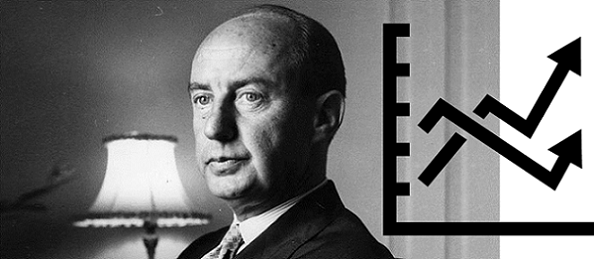
(Adlai Stevenson II, trickle-down theory creates "favours for the few, prayers for the many")
The term “trickle-down-economics” can be traced back to the 1930’s, when the columnist Will Rogers referred to money, “appropriated for the top, in the hopes that it would trickle down to the needy.” The American politican Adlai Stevenson II referred to it as, “favours for the few and prayers for the many”. In the 21st century, sporting codes could review their economic models to ensure that they do not replicate questionable economic theories, in the hope that it will increase participation and preserve their sport for the future.
This writer suggests that the economic definition of ROI has less relevance for community sport, where recognition, opportunities and incentives, are most important for participants.
Featherston Golf Club To Become Waste-Water ...
The 117 year old Featherston Golf Club has sold its 18 hole course to the South Wairarapa District Council (SWDC),] which is understood to be planning to use the 32-hectare block for waste-water irrigation, (the discharge of effluent). Prior to the sale, it was reported that the Club had been in steady decline over a number of years.
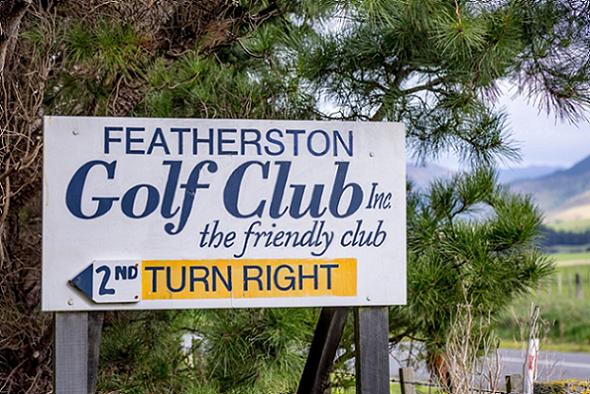
The Club was set on a “manicured 32.82 hectares” and (while initially established on Gum Grove farm nearby in 1902), was moved to its present location off Viles Road in the 1970’s. The Club-House was built using a lot of volunteer labour and at its height, the Club had from 150 to 200 members. Until two years ago, it had fielded two inter-club teams.
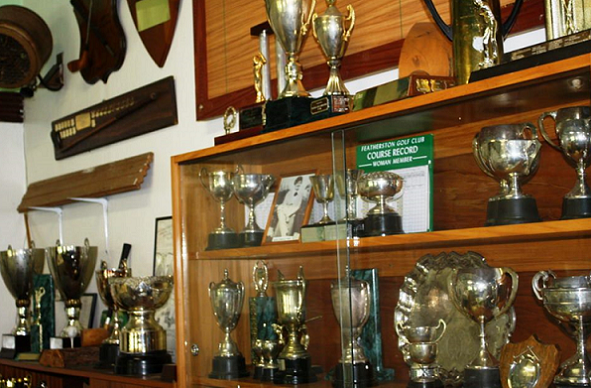
(The former trophy cabinet of the Featherston Golf Club, containing over a century of history)
Carl Fenton of New Zealand Golf said it was sad to lose any course. Golf Clubs added value to their communities beyond those people who played golf. "The facilities provide positive impact through economic, social and community, environmental and health and well-being outcomes also." The South Wairarapa District Council has now called for expressions-of-interest for the lease of the Featherston Golf Club building at 23 Viles Road, Featherston.
From The Archives ...
EVENING POST, VOLUME XXII, ISSUE 89, 13 OCTOBER 1881
“Lawn Tennis is now such a favourite pastime and mode of recreation that attire suitable for it becomes a Necessity. James Smith, Te Aro House, has just received per mail steamer, a select assortment of Lawn Tennis Hats, in cream, pale blue, Royal blue, Scarlet, cardinal pink, brown, and mottled.
For garden parties, games of croquet, and lawn tennis, nothing is so becoming and charming as the Japanese Sunshades, just imported. These are in universal use in the Old Country, and being exceedingly pretty, novel and inexpensive, should, as the quantity is but limited, meet with a ready sale. For Lawn Tennis Dresses nothing can surpass a beautiful make of diagonal twilled cream serge. For perfection of finish and durability this material is unrivalled, and can be obtained at James Smith's, Te Aro House.”
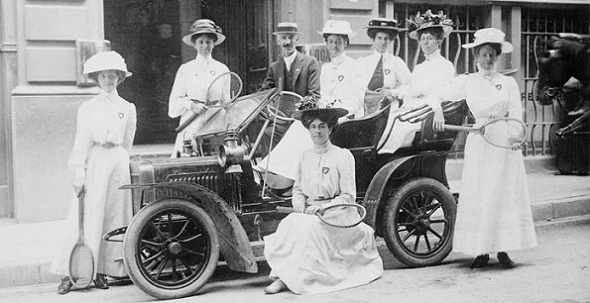
(The Ladies New Zealand Representative Lawn Tennis team of 1909, in Wellington)
While sporting fashion in the current era is based on “enhancing performance”, sporting fashion in the nineteenth century was much more about “enhancing style”. Lawn Tennis Clubs first made their appearance in New Zealand in the late 1870’s, with the pastime considered to be attractive to women (along with croquet and skating), compared to “men’s sports” (cricket and football).
The Parnell Croquet and Tennis Club in Auckland can claim to be the first club to be established (in 1877) with the Thorndon Tennis Club in Wellington, established two years later.
The Final Word …
“If you look after the parents, the kids will come.”
(Irene Eruera-Taiapa, Levin Wanderers Rugby Football Club)